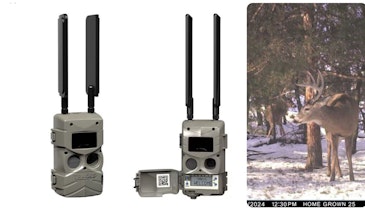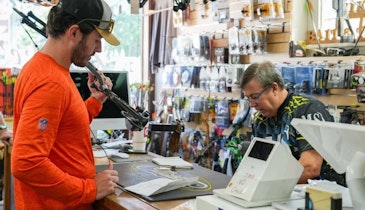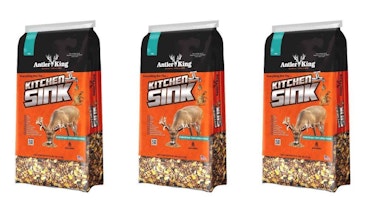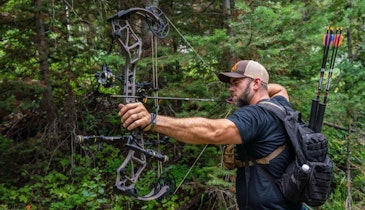In an era of smooth, pleasant-shooting bows, it’s remarkable that any manufacturer can generate a lot of buzz for producing smooth, pleasant-shooting bows. That’s what Elite has done. The Synergy garnered a lot of attention for Elite two years ago, to be replaced by the Impulse last year. The Impulse was similar to the Synergy but boosted speed with a skinnier brace height and a slightly more aggressive — though still smooth-drawing — cam.
This year Elite introduced the Tempo, employing the Impulse Cam but returning to the very generous brace height of the Synergy at 7-plus inches. New for the Tempo is a roller guide cable guard system that reduces friction for more efficiency, thus contributing to a smooth draw cycle as well as reducing torque. Also for 2017, Elite’s PALS limb system, which boasts tighter tolerances, is standard on all Elite bows.
Familiar to Elite aficionados is the Riser Cage bridged riser design on the upper portion of the riser; the narrow, twin-track cam design to reduce cam lean; the LimbSaver noise and vibration devices on upper and lower limbs; and the adjustable rubber-coated limb stops.
Elite describes the Tempo as a work of art. Elite bows do have a classic compound bow look that most shooters find appealing. Small details like string color, cam color, and even the colors of the LimbSavers and string stop tend to subtly complement the overall appearance. Less subjectively, Elite is known for its durable Pro Kote finish, as well as excellent fit and finish, and the test bow, in Realtree Xtra, revealed no visible flaws.
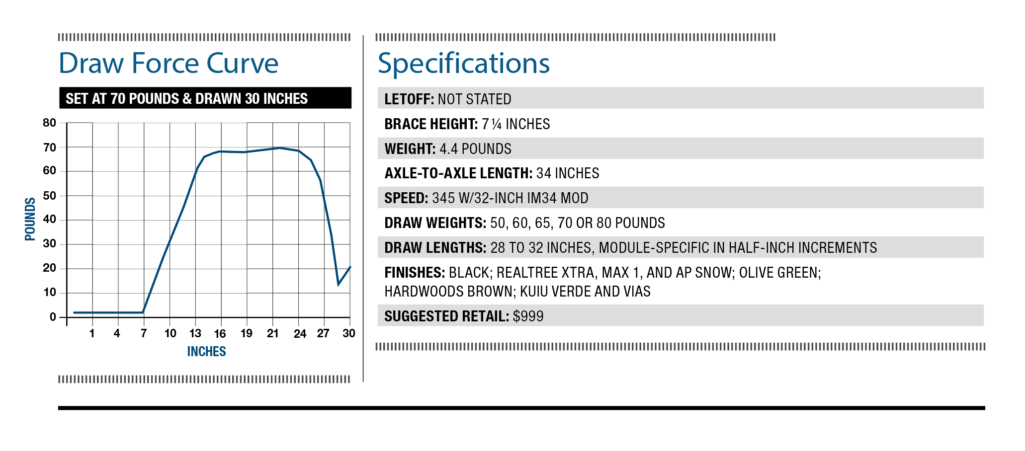
Shooting the Bow
Consistent with the fit and finish and generally tight tolerances of Elite bows, set-up proceeded without any snags. All our standard test accessories (QAD UltraRest, TruGlo Sight, TruGlo stabilizer, G5 Metapeep and D-loop) attached smoothly with no access issues and no stripped, crooked or obstructed threads. Elite bows offer two sets of sight-attachment locations, a welcome feature that makes it easier to adjust the sight picture to fit the peep and the shooter’s form, instead of adapting the form to the sight picture. For adjusting draw weight Elite employs set screws; with these loosened, limb bolts turned smoothly without slipping, sticking or chattering. The bow tuned easily with a ¾-inch center shot and the arrow nocked at 90 degrees.
At 4.4 pounds, the Tempo cannot be called a light bow, and at 34 inches axle to axle it cannot be called compact. At the same time, both these qualities contribute to the bow’s shootability and what most shooters perceive as forgiveness. All else being equal (and granted, it rarely is)a slightly heavier, longer bow is going to be quieter, produce less vibration or hand shock, and be more forgiving at longer ranges than is a lighter, shorter bow.
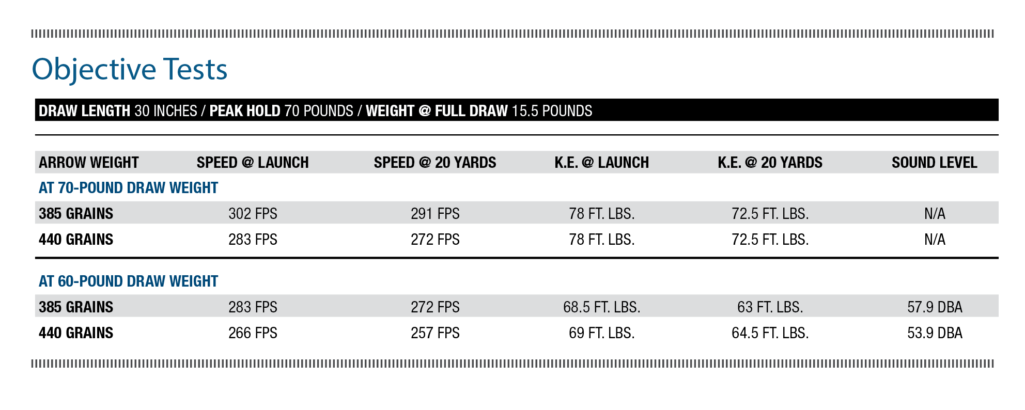
Grip is very much a matter of personal preference. I find Elite’s grips in general to be more comfortable than most, and the Tempo proved to be no exception. Even smoothness of the draw cycle is less objective than you might think. If you doubt it, pick up a bow that is 10 or 15 pounds lower in draw weight than the bow you normally shoot. It will almost certainly feel very smooth-drawing. Some shooters max out (or even surpass) the weight at which they are comfortable shooting, while others shoot at a very comfortable draw weight; both affect perception of smoothness. The Tempo, as indicated by the draw force curve, bears out Elite’s reputation for smoothness. While it features a slightly more aggressive cam than the previously mentioned Synergy, it nonetheless builds gradually to a peak weight that is not held for a long time, soon dropping into a fairly wide valley, without the tendency to “grab” that many shooters find objectionable. (This is something of a variable, since the limb stop can be adjusted to micro-tune draw length, which affects the size of the valley and, to a smaller degree, the amount of letoff.)
The limb stops ensure a very solid back wall at full draw. Adjusting it for a slightly shorter draw length narrows the valley a little, but having a rock-solid back wall to draw against consistently tends to minimize any perceived downside to this. At the same time, many shooters are convinced that less letoff (which is one result of shortening the draw length with the limb stops) enables them to hold more steadily at full draw.
The Tempo is not a radically new bow for Elite. It does fit nicely into their current lineup, though, and is sure to appeal to the many shooters who put a premium on shootability over speed.
For more information, visit www.elitearchery.com or call (877) 503-5483.

